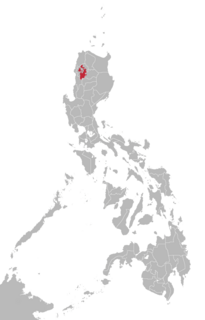Related Research Articles
Most languages of Europe belong to the Indo-European language family. Out of a total European population of 744 million as of 2018, some 94% are native speakers of an Indo-European language; within Indo-European, the three largest phyla are Romance, Germanic, and Slavic with more than 200 million speakers each, between them accounting for close to 90% of Europeans. Smaller phyla of Indo-European found in Europe include Hellenic, Baltic, Albanian, Celtic and Indo-Aryan.

The Bhil languages are a group of Indo-Aryan languages spoken by around 10.4 million Bhils in western and central India as of 2011. They constitute the primary languages of the southern Aravalli Range in Rajasthan and the western Satpura Range in Madhya Pradesh, northwestern Maharashtra, and southern Gujarat. According to the 52nd report of the commissioner for linguistic minorities in India, Ministry of Minority Affairs, Bhili is the most commonly spoken language of the union territory of Dadra and Nagar Haveli constituting 40.42% of its total population. Bhili speakers are also significant in the states of Gujarat (4.75%), Madhya Pradesh (4.93%) and Rajasthan (4.60%).
Luhya is a Bantu language of western Kenya.

Tamang is a term used to collectively refer to a dialect cluster spoken mainly in Nepal, Sikkim, West Bengal (Darjeeling) and North-Eastern India. It comprises Eastern Tamang, Northwestern Tamang, Southwestern Tamang, Eastern Gorkha Tamang, and Western Tamang. Lexical similarity between Eastern Tamang and other Tamang languages varies between 81% to 63%. For comparison, lexical similarity between Spanish and Portuguese, is estimated at 89%.

Kalinga is a dialect continuum of Kalinga Province in the Philippines, spoken by the Kalinga people, alongside Ilocano. The Banao Itneg variety is not one of the neighboring Itneg languages.

Ifugao or Batad is a Malayo-Polynesian language spoken in the northern valleys of Ifugao, Philippines. It is a member of the Northern Luzon subfamily and is closely related to the Bontoc and Kankanaey languages. It is a dialect continuum, and its four main varieties—such as Tuwali—are sometimes considered separate languages.
The Sansi language, Sansiboli, or Bhilki, is a highly endangered Indo-Aryan language of the Central group. The language is spoken by the nomadic Sansi people.
Pan is an Afro-Asiatic dialect cluster spoken in Plateau State, Nigeria.
The Ngbandi language is a dialect continuum of the Ubangian family spoken by a half-million or so people in the Democratic Republic of Congo and in the Central African Republic. It is primarily spoken by the Ngbandi people, which included the dictator of what was then known as Zaire, Mobutu Sese Seko.
The Tharu or Tharuhat languages are any of the Indo-Aryan languages spoken by the Tharu people of the Terai region in Nepal, and neighboring regions of Uttarakhand, Uttar Pradesh and Bihar in India.
Loarki, or Gade Lohar, is a Rajasthani language spoken by 20,000 nomadic people in rural Sindh, Pakistan, and by 1,000 in Rajasthan, India.
Grand Valley Dani, or simply Dani, is one of the most populous Papuan languages in Indonesian New Guinea. The Dani people live in the Baliem Valley of the Western Highlands.
Bhilali is a Bhil language of India. Two varieties, Bhilali proper and Rathawi (Rathwi), are largely mutually intelligible. A third, Parya Bhilali, is more distant, but is treated as a dialect.
Kachi Koli is a Indo-Aryan language spoken in Pakistan and India. Part of the Gujarati subfamily, Kachi Koli is closely related to Parkari Koli and Wadiyara Koli.

Itneg is a South-Central Cordilleran dialect continuum found in the island of Luzon, Philippines. This language and Ilocano are spoken by the Itneg people in Abra.
Jandavra (Jhandoria) is a minor Indic language of Sindh, Pakistan, and Jodhpur, India.
Atatláhuca–San Miguel Mixtec is a diverse Mixtec language of Oaxaca.
Estetla Mixtec is a diverse Mixtec language of Oaxaca.
Ñumí Mixtec is a diverse Mixtec language of Oaxaca. It may be closest to Peñasco Mixtec.
Kurichiya is an unclassified Southern Dravidian language spoken by the Kurichiya, a Scheduled tribe of India. The two dialects, Kunnam and Wayanad, are no closer to each other than they are to Malayalam. The Kurichiya language has 27 identified phonemes, of which 5 are vowels and 22 are consonants. Frequent consonants include /p, t, c, k/ and /m, n/, while /b, v/ occur less frequently.
References
- ↑ Noiri at Ethnologue (18th ed., 2015)
Dungra at Ethnologue (18th ed., 2015)